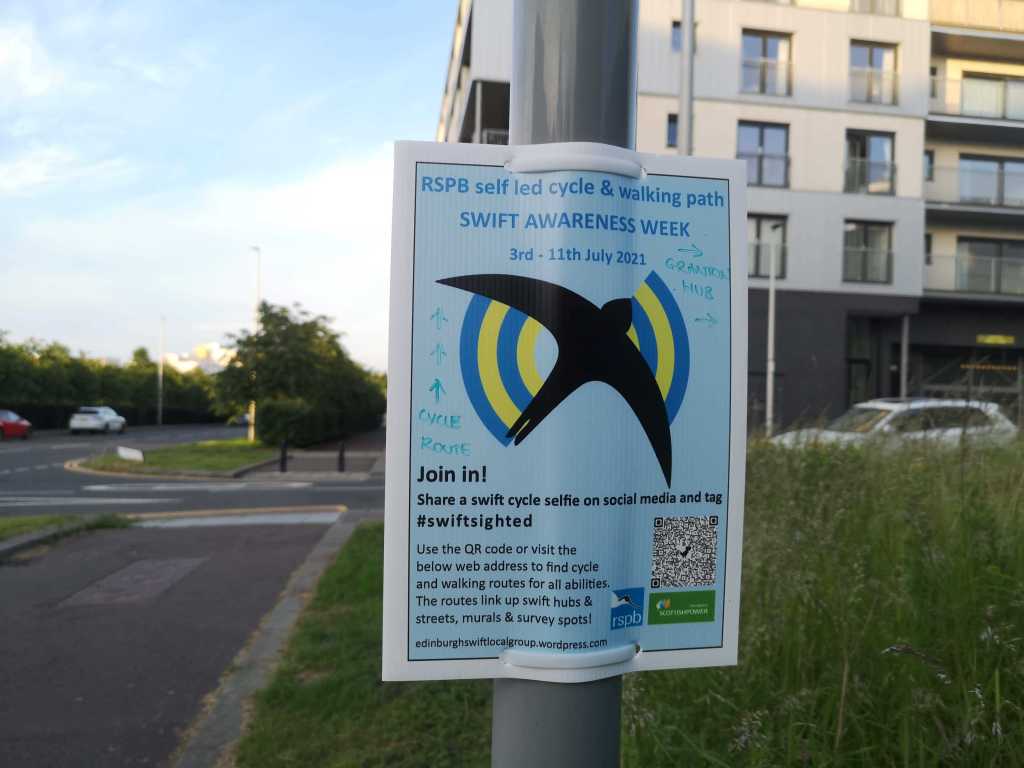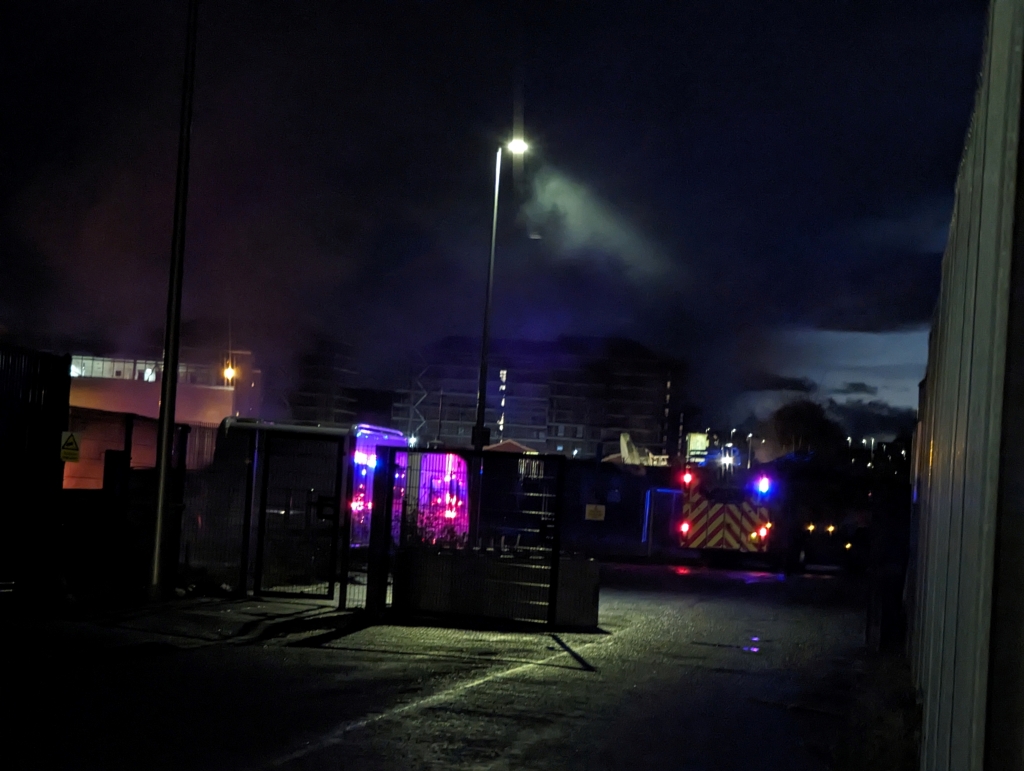‘Go Slow … Time After Time’
A community walk from the Granton:hub, Madelvic House w3w: wished.visit.silver


Captions for the images above: Left – The group, some from inside, some outside the Granton Boundary; Right – The group, checking out the wrapped-up Granton Gasholder, building site for new housing
At the edges of pavements, the walls of dilapidated buildings, the join between the land and the sea, and between homed and homeless, we wandered to mark the Festival of Terminalia on 23 February 2024.

We walked a route familiar to some and unfamiliar to others, according to a path previously visited 4 months earlier in order to make comparisons. Mapping as we went, we strayed off that path occasionally, moved across the boundary several times when the sea or a plant drew us, and noted changes wrought in the natural and urban landscape over such a short time.



Captions for above photos: Left – Electric Car Factory. Planning permission has been gained for housing. Middle – Where Granton Harbour meets the Brick (Granton or Royston) Beach at the Western Breakwater. Right – Sheila and Margaret.
Leaving the Granton:hub / Madelvic House, we started off through the wasteland area behind, past the old Electric Car Factory which was, unusually, open. We passed the travellers’ community who were building a big fire of tyres and other rubbish; the caravans housing the community which has found its way here in 1s and 2s over the last 5 years (maybe), surrounded by dismembered trees; a couple of renegade trailers where men were working – one a local barber who was known to one of our party so we stopped for a chat – between fences newly erected and ground scraped clear of its soil.

Nat pointed out the copse of silver birch which have been cordoned off for keeping, the result of our extensive lobbying of the developers. Here, an art repository is planned by the National Galleries of Scotland, way down the line. It was also the site of our community orchard (at the Tor), once upon a time.



Captions for above photos: Wasteland area behind Madelvic House where people and more-than-humans live, soon to be developed into an Arts Centre
We skirted ‘The Rabbit Run’ closely bordered by towering new blocks and also threatened to be raised to the ground, and turned down towards the sea along Waterfront Avenue – created, named and planned to be this wide, so we are told, to accommodate the trams, though there is, thankfully, no sign of them as yet.


Stories were told as we hovered at the corner: of the swift boxes often erected on lamp posts next to the Swift business sign (coincidence); of Jenny’s tenacity – spending an officially homeless year visiting the housing association and getting to know them until she was allocated an apartment in the community ahead of us; and of the day we planted the orchard (from up the road) on the grassy bank by more newbies to the area, The Pianodrome.
“With the dog, we went to the rabbit run, behind that Beech Hedge; I know it will all dramatically change very soon.”
Nat



Captions for above photos: Left – Swift poster, Middle – Where Jenny lives now (before the block was built). Right – The new orchard at The Pianodrome
Now we were on the far northern boundary of both Edinburgh as a whole and Granton, whose territory we were beating the bounds of. Many of us bemoaned the lack of access to the Brick Beach, but then a desire path was spotted which turned out to be a thoroughfare. Jubilation!
“for a while I’ve not been able to get through (the wasteland between West Shore Rd and the sea / brick beach) That’s been irritating, having that little cut through blocked off. That used to be on my route so I could get a seat and watch the sea for a while, undisturbed. Tonight we were able to walk through for the first time in ages.”
Kev

The day was at its evening cusp and it was darkling, so we continued along West Harbour Road which becomes West Shore Road, past the new-to-the-area Edinburgh Palette (what we hope will be new artist studios and home for a weekend Street festival), and turned left onto the Speirs Bruce Way (more stories of Antarctic adventures and explorers are linked to this place). We went hard by what’s left of Granton Castle where the Walled Garden is hidden (a citizen success story as it was saved from developers and now houses countless allotments, natural dye- and community soup-makers), with the Social Bite village opposite.


Captions for photos above: Two A-Z maps of Granton – 2004 on the left showing one gas holder, and 1999 on the right showing three as there used to be
I’m new to the area and walking is a way of feeling the local, recent history
Jenny
Uphill we traipsed, viewing the space for the new Granton Mural (end March 2024) and regaining the Gasholder. We stood in the rain to wonder why Caroline Park Avenue has become Waterfront Broadway, and returned to our starting point just as the fire engine arrived to douse the fire, now emitting acrid black smoke.
We’re from slightly outside the area. I’ve been down here a LOT walking the dogs so it’s very familiar, but it’s interesting to do it in a group because different people see different things. [Did you notice the changes?] Oh definitely.
Sheila
Toasting with a libation (warm apple juice), as is customary at this Festival, we swapped experiences, hopes and fears. Our discussion focused on the place where the inner landscape met the outer.
I used to like going there because of the nature around the gasworks. Because there was such a high fence and nobody could get in, it was undisturbed and there were wild orchids. To see it all demolished and a building site … it’s sad.
Maria
Along the bread line, the coast line, and the invisible lines between here and there, and us and other, we walked. It’s a time of great change in this area: trees taken down, blocks of flats going up, buildings repurposed and roads renamed (no-one knows why, though we suspect so-called ‘gentrification’).

You May also like (links)
Festival of Terminalia Community Walk 2024
Walking the Line Terminalia 2023
Granton Boundary Walk 2023 started on the Festival of Terminalia
© All photos my own




















